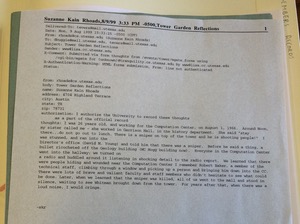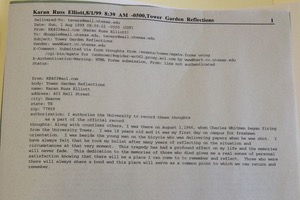Days after the 1966 UT tower shooting, the air on campus seemed stiff. Some survivors had been released from the hospital while the deceased had begun to be buried. The media buzzed and university officials scrambled to find ways to help the university community adjust to life after the tragedy. Years began to pass and slowly the moment began to fade. For some, the tower tragedy paved the way to an endless struggle to find peace with their experience. For others who had been on or near campus and who had shots fired at them or at their friends and loved ones, the day would remain a dark moment in their life.
For a university community, losing a student or professor in a mass killing can produce a whirlwind of emotions. Add to this the fact that this act of violence was perpetrated by a member of that same community. Charles Whitman, a university student, shot and wounded over 45 people. The victim and wounded list would include mothers, daughters, sons, husbands, wives, grandchildren, and fathers leaving deep wounds in the lives of their beloved and the communities they belonged to. To this day, the community of Austin continues to struggle with the effects of the tragedy of August 1, despite attempts to heal by university officials, leaders of the community, law enforcement, public agencies, and student groups.
Moments of violence in a community’s history can take on different forms. For some communities, these moments are embodied in acts of war, violations of rights, or other direct acts of aggression towards people by the state or some other large, powerful group, as in Rwanda, Nazi Germany, and Guatemala. Healing from these instances requires challenging and often painful recollections of the moment either through storytelling, reflection, or erecting and interacting with memorial structures. Physical memorials can be constructed as testimonies to the past to acknowledge an event, provide an avenue of healing, and as an effort to remind future generations of the community’s history. For some people, these memorials can be distressing, but for others, memorials offer an opportunity to reflect and reconcile.
Let us consider that as victims, we require or perhaps expect some sort of reparation for the pain or loss we experience. Reparations work to re-establish trust and provide compensation for past wrongs. Memorials can offer experiences of reparation and healing. Survivors can visit and reflect on the past through a visual or by receiving a public acknowledgment that gives the survivor a space to affirm their experiences. The significance of affirming a person’s experience can greatly reduce the toll of negative emotions often experienced after incidents of violence as described in “Aftermath: Remembering and Forgetting the UT Tower Shooting.”
The right to reparation comes from a conceptual framework for dealing with the past constructed by Swiss Peace, an independent peace research foundation in Switzerland. It focuses on four pillars of reconciliation mostly geared towards recovery from government sponsored acts of violence. The four pillars include 1) the right to know 2) the right to justice 3) the right to reparations and 4) the guarantee of non-reoccurrence.
Today if you walk around the University of Texas at Austin, especially around the UT tower, you would never guess that one of the most gruesome campus murders of the 20th century occurred here. When people visit the re-opened observation deck of the tower they might hear some whispers about the shooting. Some may even quietly mention Charles Whitman’s name. For many of those with memories of the shooting, the lack of remembrance and commemoration is striking. But how can or how should a community remember the incident of August 1? Who should be in charge of such a task? Many would argue that the university holds the principal responsibility for spearheading efforts to heal from this tragedy, but perhaps that only scratches the surface.
In the minds of some, universities are responsible for nurturing the next generation of society’s members. Pastor Larry Bethune called this the sacred trust of families during his initial conversations with UT officials about establishing a memorial around the 33rd anniversary. In the case of the UT tower shooting, the university did not contribute directly to the violence nor did it ignore its responsibilities in the immediate aftermath. In fact, as noted in the article “The University Response: A Product of the Times,” the university discreetly set up initiatives to aid the direct survivors and victims either through special academic considerations for returning students or fundraising efforts for the wounded and deceased. Resentment and anger from the survivors, as well as other Austinites, grew when the university failed to erect any sort of public apology or remembrance structure until decades later.
As the university and Austin community approach the 50th anniversary of the shooting, readers can most clearly see this frustration at the lack of a satisfactory remembrance effort by reading news articles or comments posted on blogs and social networking sites. In 2016, an independent group consisting of some survivors of the UT tower shooting have initiated an effort to erect a memorial, but this memorial is not the first. Several efforts at memorialization have been attempted by both the university as well as the Austin police department, the faith based community, and more recent university students. These memorials include gardens, plaques, a walking tour, and archival collections.
The first memorial initiative occurred in 1996 when a group of faith based groups apart from the university held a prayer vigil in an attempt to heal and reclaim the violent space for the community.
As Pastor Larry Bethune recalls, this prayer vigil grew out of discussions with UT professor Rosa Eberly, who in the 1990s had begun to teach “The UT Tower and Public Memory,” a course aimed at teaching students about civic engagement and rhetoric. Eberly belonged to the same faith community as Pastor Bethune, senior pastor of the Baptist University Church, and helped to organize the prayer vigil. Archival records seem to indicate that the university finally reacted to the frustrations shortly after the prayer vigil. In 1999, one year after Larry R. Faulkner became President of UT Austin, the Board of Regents approved Faulkner’s request to initiate a planning group to investigate the best way to commemorate the incident. Typed notes from a meeting between Faulkner and one of his assistants point to the fact that despite the years, community members continued to pressure the university for some memorial action. In the notes, Faulkner references a letter from a 1982 UT graduate commenting on the “overdue” need for a memorial to provide “closure” and “a permanent recognition of the victims of the tower shootings of 1966.”
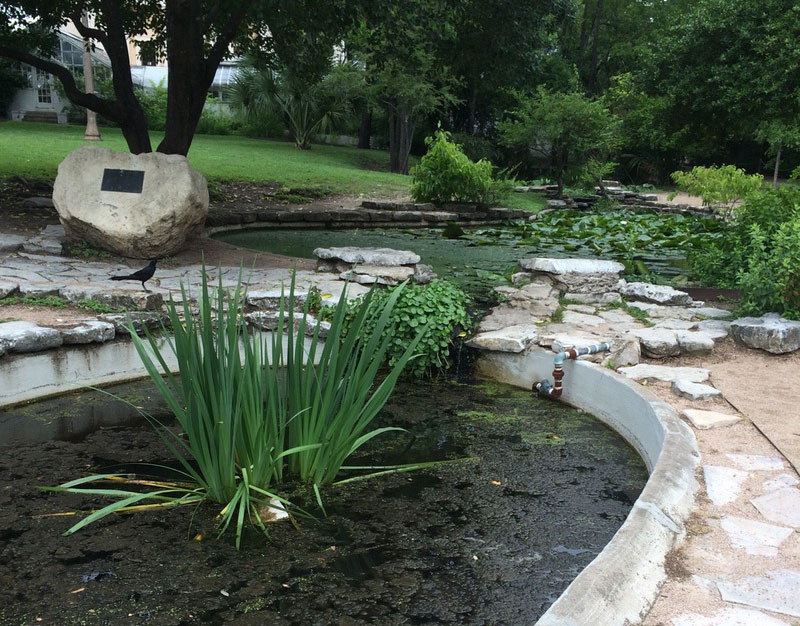
Because of his involvement with the 30th anniversary, the university sought the help of Pastor Bethune in planning for the university’s first attempt at memorializing the tragic event. Bethune joined the core group as they met throughout the summer of 1999, before the planned August 1 dedication of the memorial garden that would then be followed by the reopening of the tower on September 15, 1999, discussed in more detail in “The Specter of the Tower”. On August 1, 1999 at the Turtle Pond now called the Reflection Garden, the university held a memorial service where it lowered the flags to half-staff, President Faulkner gave remarks, and the tower was darkened as is customary during moments of grief for the university.
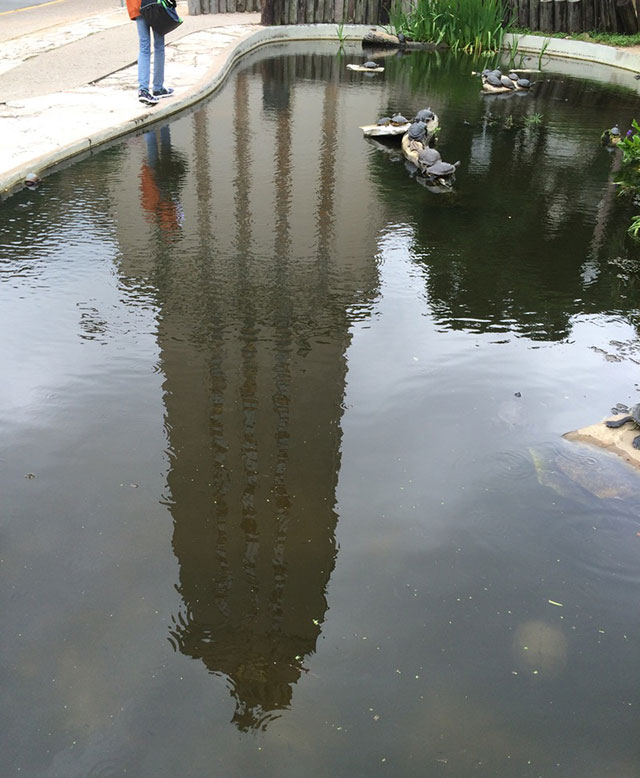
During this time the university also passed out forms similar to the UT Remembers forms for members of the community to write reflections on paper or via email of their lost one. These reflections are then placed inside the University permanent archives.
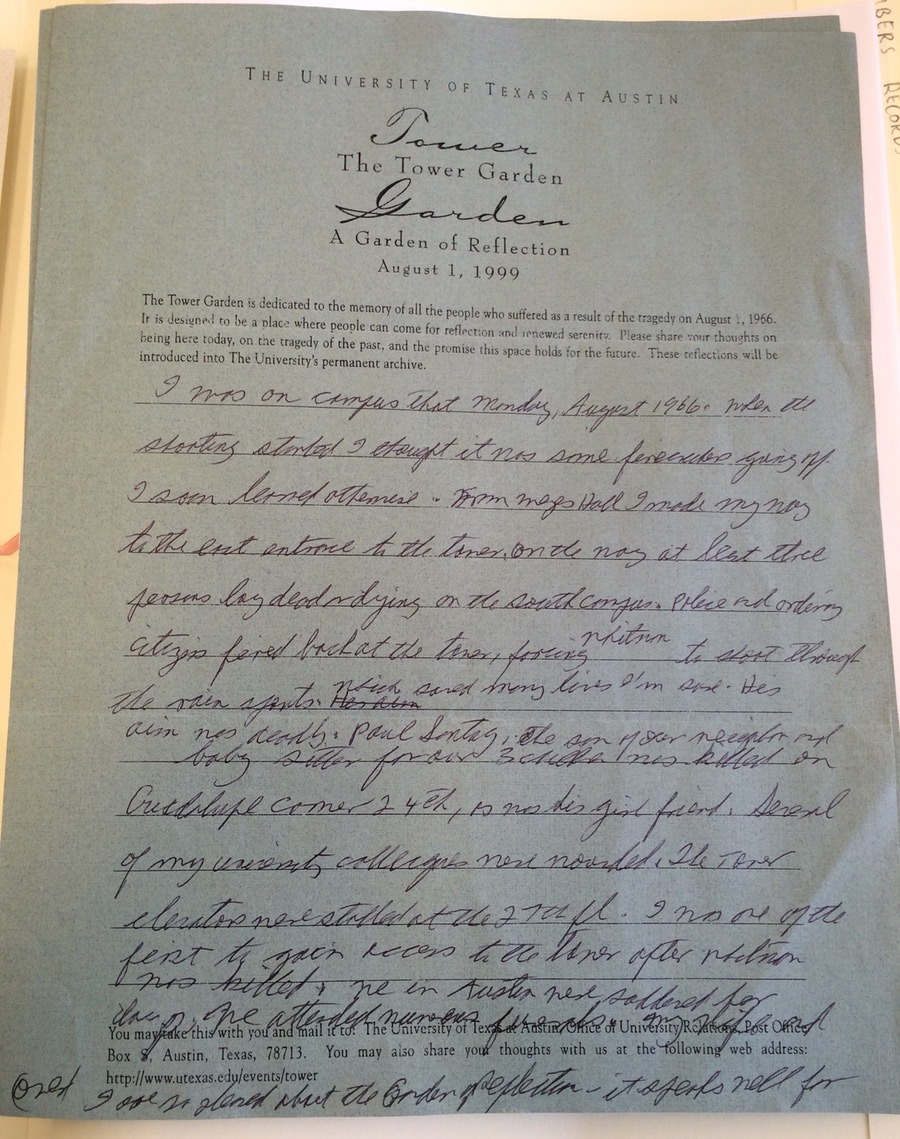
Individuals could also submit their reflections via email, a page currently unavailable, but accessible through the Internet Archive’s Wayback Machine with the last capture date of April 30, 2015.
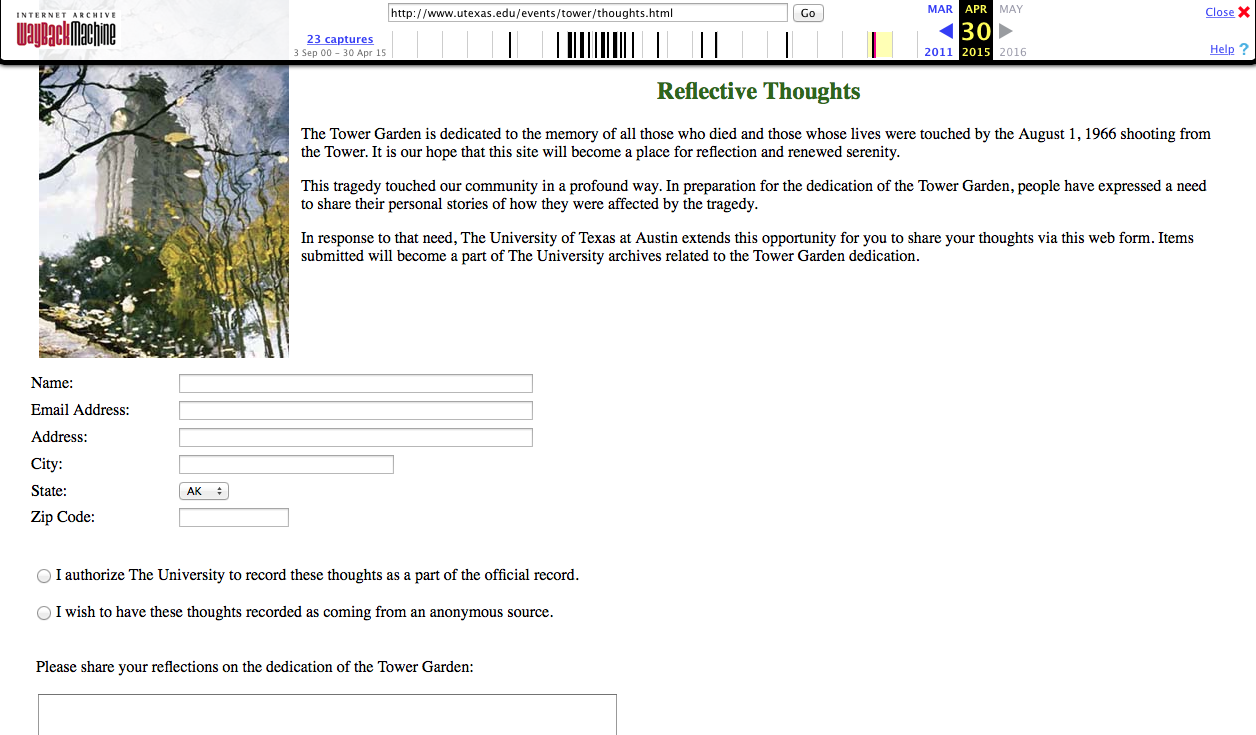
In January of 2007, shortly after the 40th anniversary, University of Texas officials put a bronze plaque in the garden near the tower as a memorial “to those who died, to those who were wounded, and to the countless other victims who were immeasurably affected by the tragedy,”
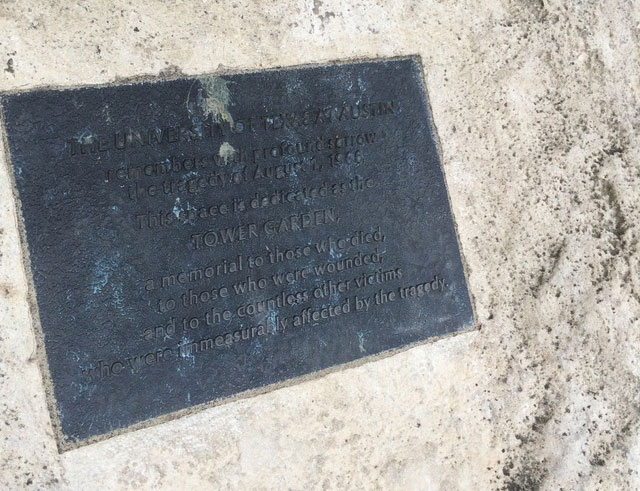
Action taken by the University always seemed to coincide with other mass shootings on high school and university campuses such as the Columbine and Virginia Tech shootings, April 20th, 1999 and April 16, 2007 respectively. Other somewhat documented memorialization efforts came from non-university groups: the Austin Police Department Tower Heroes plaque inscription in 2008 located in the far southwest side of Austin and a student led walking memorial tour of campus in 2014.

“Tower Heroes.” Plaque located at the Travis County Precinct 3 building at 8656B W Texas 71, Austin, TX 78735.
Despite all these attempts, the general public continues to decry an absence of remembrance. Do we attribute this frustration to a lack of awareness of the efforts by the university or do we recognize the depth of the pain experienced by this community? As Pastor Bethune mentions during his oral history, everyone deals with loss in a different way and for different lengths of time. As seen through other memorializations such as the 9/11 Ground Zero Site, the Columbine Memorial, and the Ntarama Church in Rwanda, directly impacted communities and those who felt the after effects approached healing in diverse ways.
As observers, we should acknowledge that while the effort to pay respect to the deceased and wounded did not come to fruition until 30 years after the tragedy, the university did eventually act. The discussions held behind closed doors among the dedication planning group members according to Pastor Bethune included thoughtful and purposeful actions, but due to funding constraints and resistance from unnamed individuals, the envisioned dedication fell short. Even the archive collecting attempt fizzled due to little publicity and awareness of its existence. For many new Austinites as well as those who experienced the UT tower shooting firsthand, the attempts at memorialization have yet to be enough. Perhaps they will never be enough.


